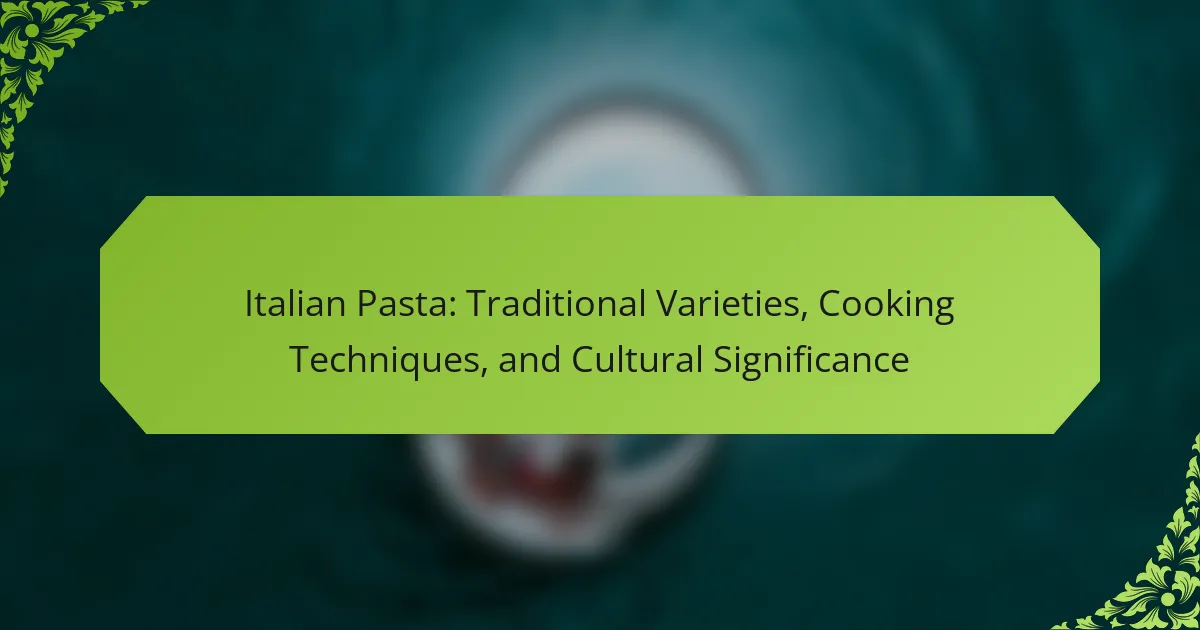French cheese offers a rich tapestry of flavors and textures, making it a staple in culinary traditions. Explore popular types like Brie and Roquefort, discover pairing suggestions with wines and fruits, and appreciate the deep cultural heritage behind this beloved food. Learn how regional influences shape each cheese and enhance your tasting experience with effective storage and serving tips.

What are the key characteristics of French cheese?
French cheese is characterized by its diverse types, rich flavors, and unique production methods. The key characteristics include a wide variety of textures, such as creamy, crumbly, and hard, along with distinct flavors ranging from mild to strong. Regional influences play a significant role, with each area contributing its own unique styles, such as Brie from Île-de-France or Roquefort from the south. Pairing suggestions often highlight complementary wines, fruits, and breads, enhancing the overall culinary experience. The heritage of French cheese reflects centuries of artisanal techniques, emphasizing quality and tradition in cheese-making.
How does the terroir influence the flavor of French cheese?
Terroir significantly influences the flavor of French cheese by reflecting the specific environmental conditions where the milk-producing animals graze. Factors such as soil composition, climate, and local flora contribute unique flavors and aromas to the cheese. For instance, cheeses like Roquefort derive their distinct taste from the specific mold and the region’s limestone caves. Additionally, the grazing patterns of animals impact the milk’s composition, resulting in variations among cheeses from different regions. This interplay of geography and agriculture creates a rich tapestry of flavors that defines French cheese.
What are the different milk sources used in French cheese production?
French cheese production primarily uses cow, goat, and sheep milk. Each source contributes unique flavors and textures to the cheeses. Cow’s milk is the most common, producing varieties like Brie and Camembert. Goat’s milk lends a tangy taste, found in cheeses like Crottin de Chavignol. Sheep’s milk, rich in fat and protein, is used for cheeses like Roquefort and Pecorino. Each milk type embodies distinct attributes that enhance the diversity of French cheese.

Which types of French cheese are most popular?
The most popular types of French cheese include Brie, Camembert, Roquefort, Comté, and Chevre. These cheeses are celebrated for their unique flavors and textures, reflecting France’s rich culinary heritage.
Brie is known for its creamy texture and mild flavor, making it a favorite for cheese boards. Camembert offers a similar profile but has a stronger aroma. Roquefort, a blue cheese, is distinguished by its sharp, tangy taste. Comté is a firm cheese with nutty notes, while Chevre, made from goat’s milk, is recognized for its distinct tanginess.
Pairing suggestions enhance their enjoyment. Brie pairs well with fruits like apples, while Roquefort complements nuts and honey. Chevre is delightful with fresh herbs and crusty bread. These pairings enrich the tasting experience, showcasing the versatility of French cheese.
The popularity of these cheeses stems from their unique attributes, such as Brie’s creaminess and Roquefort’s boldness, which cater to diverse palates.
What distinguishes soft cheeses like Camembert and Brie?
Soft cheeses like Camembert and Brie are distinguished by their creamy texture and bloomy rind. Both cheeses are made from cow’s milk and undergo a similar fermentation process, but Camembert has a stronger flavor and aroma due to its unique aging conditions. The moisture content in Brie is higher, resulting in a softer consistency. These differences in texture and flavor profile make them suitable for various culinary applications, from cheese boards to gourmet dishes.
How do hard cheeses like Comté and Gruyère compare?
Comté and Gruyère are both hard cheeses with distinct flavor profiles and characteristics. Comté is known for its nutty, sweet taste and firm texture, while Gruyère offers a more complex flavor with hints of earthiness and slight saltiness.
| Cheese | Flavor Profile | Texture | Origin | Aging Time |
|———-|————————|————–|——————|—————-|
| Comté | Nutty, sweet | Firm | France (Jura) | 4-24 months |
| Gruyère | Earthy, slightly salty | Hard, smooth | Switzerland | 5-12 months |
Both cheeses pair well with fruits, nuts, and various wines, enhancing their culinary versatility.
What are the unique features of blue cheeses like Roquefort?
Blue cheeses like Roquefort are distinguished by their strong flavor, creamy texture, and blue-green veins caused by mold. These cheeses are made from sheep’s milk, offering a unique profile that includes tangy, salty, and earthy notes. Roquefort is aged in natural caves, which enhances its flavor complexity. The unique attribute of Roquefort is its specific mold culture, Penicillium roqueforti, which contributes to its distinct taste and aroma. Pairing suggestions include sweet fruits, nuts, and robust red wines, which complement its bold characteristics.

How can French cheese be paired with food and beverages?
French cheese pairs excellently with various foods and beverages, enhancing flavors and creating delightful combinations. Common pairings include Brie with fruits, Roquefort with nuts, and Camembert with crusty bread.
For wines, soft cheeses like Brie complement Chardonnay while strong cheeses like aged Comté pair well with red wines like Cabernet Sauvignon. Additionally, pairing cheeses with craft beers can create unique flavor experiences, such as pairing Gouda with a malty brown ale.
Experimenting with accompaniments like honey, olives, or charcuterie can elevate the tasting experience. Each cheese type offers distinct attributes that influence pairing choices, making exploration enjoyable.
Which wines complement specific types of French cheese?
Wines that complement specific types of French cheese enhance flavors and balance textures. For example, a creamy Brie pairs well with a light Chardonnay, while robust Roquefort matches with sweet Sauternes. Here are some ideal pairings:
| Cheese Type | Recommended Wine |
|——————|———————–|
| Brie | Chardonnay |
| Camembert | Pinot Noir |
| Roquefort | Sauternes |
| Comté | Sauvignon Blanc |
| Goat Cheese | Loire Valley Reds |
| Reblochon | Gamay |
What are the best bread and fruit pairings for French cheese?
The best bread and fruit pairings for French cheese enhance flavors and textures. Baguette complements Brie, while sourdough pairs well with Roquefort. Fresh figs are ideal with goat cheese, and apples enhance Comté. Pears also work beautifully with Camembert, creating a delightful contrast.
How does regional cuisine influence cheese pairings in France?
Regional cuisine significantly shapes cheese pairings in France by emphasizing local ingredients and traditions. Each region offers distinct cheeses that complement local dishes and wines. For instance, in Normandy, Camembert pairs beautifully with cider, while in Provence, goat cheese often accompanies herbes de Provence and rosé wine. This interplay of flavors highlights the unique culinary heritage of each area, showcasing how regional ingredients influence cheese selection and pairing practices.

What cultural significance does French cheese hold?
French cheese holds immense cultural significance as a symbol of national identity and culinary heritage. It reflects regional diversity, with over 400 distinct varieties, each embodying local traditions and flavors. The meticulous craftsmanship involved in cheese-making showcases France’s dedication to quality and artisanal practices. Additionally, cheese plays a central role in French gastronomy, often paired with wines and breads, enhancing social gatherings and celebrations. This cultural staple not only nourishes but also fosters community and connection, making it an integral part of French life.
How is French cheese celebrated in culinary traditions across regions?
French cheese is celebrated through diverse culinary traditions that vary by region. Each area highlights local varieties and unique pairing methods, showcasing the cheese’s versatility.
In Normandy, Camembert is often paired with crusty bread and cider, reflecting the region’s agricultural heritage. In Provence, goat cheese complements fresh vegetables and herbs, enhancing Mediterranean flavors. Meanwhile, in the Alps, cheeses like Reblochon are central to hearty dishes such as tartiflette, demonstrating the importance of cheese in winter cuisine.
Additionally, cheese festivals across France, like the Fête du Fromage in Saint-Nectaire, celebrate local varieties and traditional production methods. These events foster community and preserve culinary heritage, emphasizing the integral role of cheese in French culture.
What role does cheese play in French gastronomy and dining etiquette?
Cheese is essential in French gastronomy, enhancing flavors and showcasing regional diversity. It plays a pivotal role in meals, often served as a course on its own or paired with wine.
French cheese varieties include Brie, Roquefort, and Comté, each with unique characteristics. Pairing cheese with specific wines enhances the dining experience, showcasing the rich culinary heritage of France.
Dining etiquette dictates that cheese should be served at room temperature. It is typically cut with a specific knife to maintain its texture. This attention to detail reflects the importance of cheese in French culture.
In summary, cheese embodies French culinary traditions, elevating dining experiences through its variety and pairing possibilities.

Which unique and rare French cheeses should you try?
Try unique French cheeses like Roquefort, Époisses, and Comté. Rare options include Langres and Valdeon. These cheeses offer distinct flavors and textures, enriching your culinary experience. Roquefort is known for its blue veins and tangy taste, while Époisses features a strong aroma and creamy texture. Comté provides a nutty flavor, ideal for pairing with fruits. Langres stands out with its unique washed rind, and Valdeon combines cow and goat milk for a rich profile. Exploring these cheeses enhances appreciation for French culinary heritage.
What are the lesser-known artisanal cheeses from France?
France boasts a variety of lesser-known artisanal cheeses that reflect its rich culinary heritage. Some notable examples include:
1. **Tomme de Savoie** | A semi-hard cheese with earthy flavors, originating from the Savoie region.
2. **Bleu de Gex** | A blue cheese with a creamy texture, produced in the Jura region.
3. **Morbier** | Known for its distinctive line of ash, this cheese hails from the Franche-Comté area.
4. **Saint-Nectaire** | A creamy, washed-rind cheese from the Auvergne region, known for its nutty flavor.
5. **Chèvre de Valençay** | A goat cheese shaped like a pyramid, featuring a tangy and slightly salty taste.
6. **Reblochon** | A soft, washed-rind cheese from the Alps, celebrated for its rich and buttery profile.
These cheeses offer unique attributes that enhance their appeal, making them excellent choices for pairing with wines and charcuterie.
How does the aging process impact the flavor of rare cheeses?
The aging process enhances the flavor complexity of rare cheeses. As cheese matures, enzymes and bacteria break down proteins and fats, creating new flavors and aromas. For instance, aged French cheeses like Roquefort develop rich, tangy notes that younger versions lack. Additionally, the texture becomes firmer, further influencing the tasting experience.

What are the best practices for storing and serving French cheese?
To store and serve French cheese effectively, maintain proper temperature and humidity levels. Keep cheese refrigerated at 35-45°F (1-7°C) and wrap it in breathable materials like wax paper or cheese paper. Avoid plastic wrap to prevent moisture buildup. Serve cheese at room temperature for optimal flavor, allowing it to sit out for 30-60 minutes before tasting. Pairing with complementary foods enhances the experience, such as fruits, nuts, and artisanal bread. Regularly check for mold and odors, discarding any compromised cheese.
How can you properly store different types of French cheese?
To properly store different types of French cheese, keep them at the correct temperature and humidity levels. Soft cheeses like Brie should be wrapped in parchment paper and stored in the refrigerator, while hard cheeses like Comté can be wrapped in wax paper and kept in a cheese drawer. Blue cheeses require airtight containers to prevent strong odors from spreading. Always allow cheese to come to room temperature before serving for optimal flavor.
What are the common mistakes to avoid when serving French cheese?
Common mistakes to avoid when serving French cheese include not allowing it to reach room temperature, mispairing with beverages, and serving too many varieties at once. To enhance the experience, serve cheese at its ideal temperature, typically around 60-70°F. Pair soft cheeses like Brie with light wines and stronger cheeses like Roquefort with bold reds. Avoid overwhelming guests with too many options; select a few that complement each other.
What expert tips can enhance your cheese tasting experience?
To enhance your cheese tasting experience, focus on quality, pairings, and presentation. Select a variety of French cheeses, such as Brie, Roquefort, and Comté, to showcase diverse flavors and textures. Pair cheeses with complementary accompaniments like fresh bread, fruits, and wines to elevate the tasting. Serve at the right temperature; soft cheeses taste best slightly warmed, while hard cheeses should be at room temperature. Consider the culinary heritage of each cheese, as this adds depth to the tasting experience and appreciation of its unique attributes.



